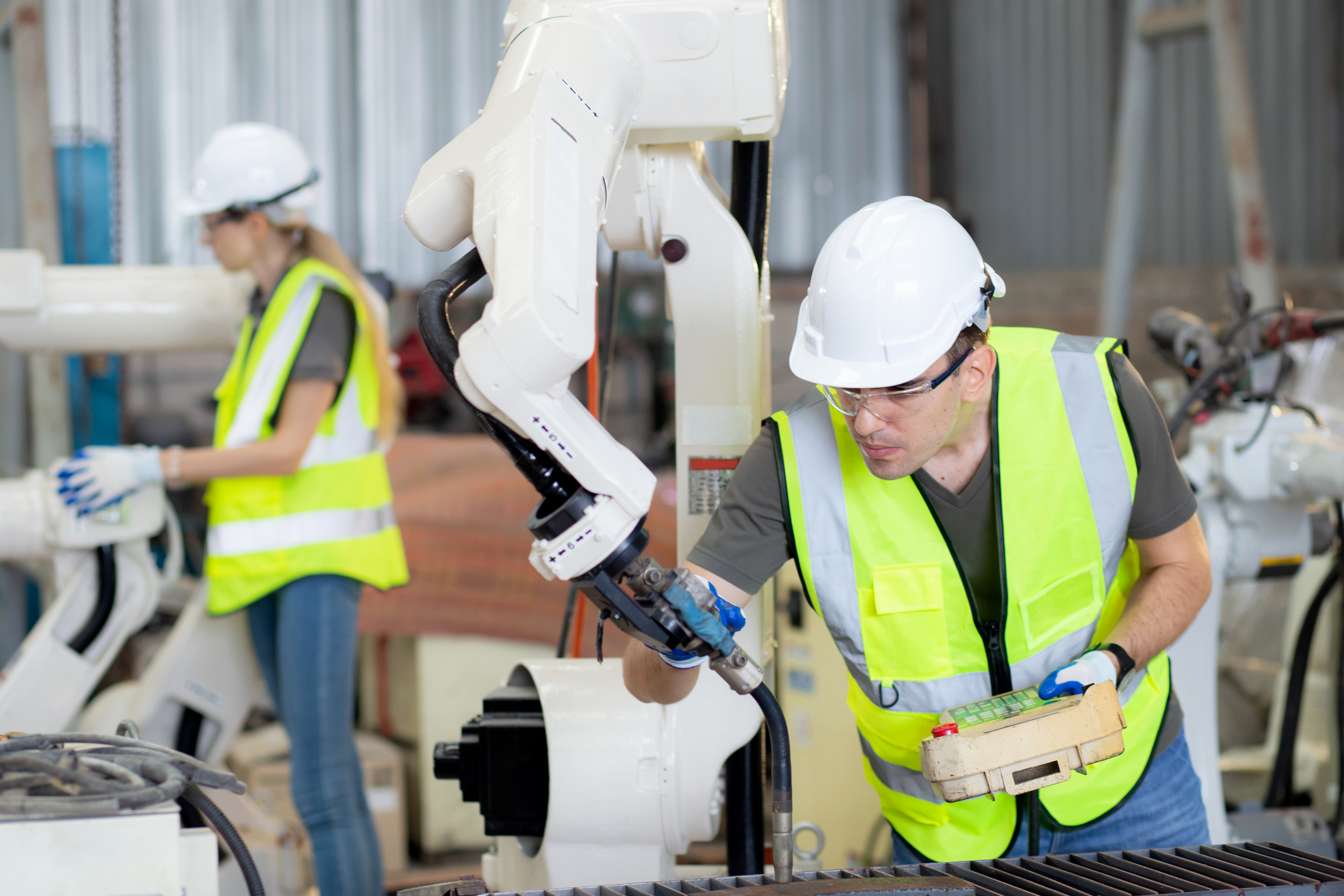This article is written by Stine Johansen, Postdoctoral Research Fellow (Human-Robot-Interaction Program) at Australian Cobotics Centre.
At the OzCHI 2023 conference, researchers from the Australian Cobotics Centre (QUT and UTS) and CINTEL (CSIRO) co-organised a workshop on the topic of “Empowering People in Human-Robot Collaboration: Why, How, When, and for Whom”. Our previous workshop at the OzCHI 2022 conference showed that there is a growing interest in the area from both researchers and practitioners located in the regions of Oceania. In the 2022 workshop, discussions centred around human roles in human-robot collaboration, empathy for robots, approaches to designing and evaluating human-robot collaboration, and ethical considerations. With the 2023 workshop, we aimed to take a step further by (1) discussing underlying assumptions that shape our research and (2) identifying pathways towards shared visions for future research. While it is impossible to capture all the nuances of our discussions here, I will use the limited space in this article to provide a peek into two of the topics that emerged. I hope this can serve as an inspiration to anyone who is reflecting on the why, when, how, and who of empowering people in human-robot collaboration.
Topic 1: Robots as tools for creativity
While an increasing number of digital tools to support creative work come into the world, there are still questions left to be answered in terms of how that support can or should be designed. While a robot might aid someone in drawing, 3D printing, milling furniture, etc, it is up to people to ask the right kinds of questions for artistic expressions and experiences. Furthermore, while a robot might be able to manipulate physical materials, the processes of moulding, cutting, drawing, painting, etc., is part of an artistic conversation that artists and creative professionals have with those materials. Workshop participants proposed that there is a potential for further empirical studies of how creativity works as a basis for how robots can support that.
There are a number of examples out there where designers, developers, and artists explore roles that robots can play for creative work. Here are some that I have come across:
Youtuber and artist Jazza tried to evaluate the drawing capabilities of a small desk robot by line-us. The video starts with a highly unsuccessful replication of Jazza’s drawings and moves into an interactive game session, e.g., playing hangman. It seems that replicating an artist’s drawings is a fun gimmick but perhaps does not offer any further space for creativity. (See the video here)
The humanoid robot Ai-Da paints “self”-portraits which seems ironic when a robot inherently does not have a self or an identity—at least from the perspective of current understandings of consciousness. The artist, Aidan Meller, states that the point of Ai-Da is to raise questions around what role people have if robots are able to replicate our work. (The Guardian published this article about Ai-Da in 2021)
By the way, on the topic of robot consciousness, our workshop panel member Associate Professor Christoph Bartneck, University of Canterbury, hosts a podcast in which the topic was discussed. You can listen to the episode here.
In a more academic direction, the MIT Media Lab has conducted research on ways that robots can help children be creative. They designed a set of games that support children either through demonstrating how to implement a creative idea or by prompting children to reflect by, e.g., asking them questions. (Read about the research here)
Topic 2: Assumptions about robots
Even though, much research and development has already shown a multitude of ways that robots can perform tasks in work and everyday life, there are still underlying assumptions about robots and people that drive these developments. The phrases we use between ourselves, participants, collaborators, industry partners, etc, to describe a design concept or how a robot could solve a problem are part of a larger storytelling. Such storytelling comes through narratives of, e.g., robots taking jobs from workers. We might ask ourselves how we contribute to these narratives, both in public forums as well as research publications.
As a side note to this, fiction and ‘speculation’ is increasingly utilised as a tool for designing human-robot interaction. Some examples include Auger, 2014, Luria et al., 2020, and Grafström et al., 2022. Speculative design is not a new method, but rather becoming a well-established approach within human-computer interaction (HCI), interaction design, and now also human-robot interaction.
What are our visions and how can we get there?
Our shared visions for the future of human-robot collaboration are not necessarily surprising, but thankfully reassuring, that collaborative robots should support people. There are, however, a multitude of ways that people can be supported. These range from support (1) during an actual task, e.g., heavy lifting, improving work safety, and providing effective communication, (2) by fitting into dynamic and unstructured environments, and (3) as part of the foundation for people to have a healthy and rewarding work life.
Different pathways exist towards making this reality. Here are a few examples taken from the workshop discussion. First, while the Australasian context might present some unique challenges, we can still learn from other parts of the world, e.g., in terms of socio-economic pressures that drive robotic development. Second, we can continuously reframe the problems we choose to prioritise. There are perhaps opportunities to move away from the framing of robots performing “dull, dirty, and dangerous” work to robots performing collaborative, inclusive, and even creative work. Third, increasingly dynamic settings require robotic interfaces that provide modular solutions. This prompts the question of how end users might use modular robotic systems, and whether this approach is best suited for certain problems and contexts. Finally, participants agreed that we increasingly need a network of researchers in this area to support each other.
In the spirit of the last point, I invite researchers and practitioners to visit the Australian Cobotics Centre at QUT, Brisbane. You are also welcome to join our public seminars, both as audience and presenter. I look forward to continuing this crucial conversation.
References
James Auger. 2014. Living with robots: a speculative design approach. J. Hum.-Robot Interact. 3, 1 (February 2014), 20–42. https://doi.org/10.5898/JHRI.3.1.Auger
Anna Grafström, Moa Holmgren, Simon Linge, Tomas Lagerberg, and Mohammad Obaid. 2022. A Speculative Design Approach to Investigate Interactions for an Assistant Robot Cleaner in Food Plants. In Adjunct Proceedings of the 2022 Nordic Human-Computer Interaction Conference (NordiCHI ’22). Association for Computing Machinery, New York, NY, USA, Article 50, 1–5. https://doi.org/10.1145/3547522.3547682
Michal Luria, Ophir Sheriff, Marian Boo, Jodi Forlizzi, and Amit Zoran. 2020. Destruction, Catharsis, and Emotional Release in Human-Robot Interaction. J. Hum.-Robot Interact. 9, 4, Article 22 (December 2020), 19 pages. https://doi.org/10.1145/3385007
Online links
Jazza trying the line-us robot:
https://www.youtube.com/watch?v=oZYqrPnpDoY
Article about Ai-Da:
https://www.theguardian.com/culture/2021/may/18/some-people-feel-threatened-face-to-face-with-ai-da-the-robot-artist
MIT Media Lab projects on child-robot interaction for creativity:
https://www.media.mit.edu/projects/creativity-robots/overview/
Christoph Bartneck’s podcast episode on robot consciousness:
https://open.spotify.com/episode/5sFNVXTiv9Sh3u360DlZFy?si=808266bb27ea4b73
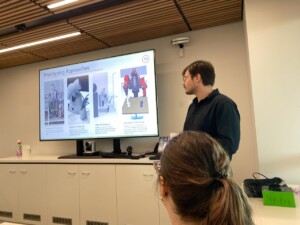


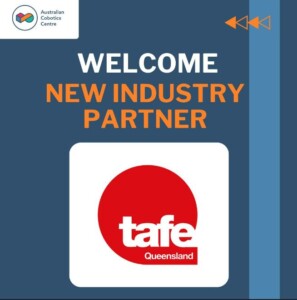

 Akash Hettiarachchi is a PhD researcher based at Queensland University of Technology and his project is part of the
Akash Hettiarachchi is a PhD researcher based at Queensland University of Technology and his project is part of the 
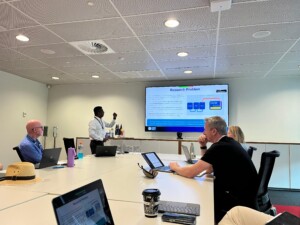
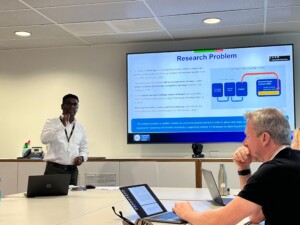

 We are pleased to welcome
We are pleased to welcome 